Almora – The place where my ancestors trace their origin too. I have spent a good part of my growing up years at my grandmother’s place in Dehradun. Throughout those years we witnessed ‘Ija’ living the minimalist life, always relying on her kitchen garden for all solutions. She followed a very disciplined life, waking up at 5 in the morning every single day, no matter what, come hail or poor health, her internal clock was set at 5 am in the morning. Bathing with cold water in all the seasons and heading straight to her prayer room where she spent hours praying. By the time the remaining household managed to drag themselves out of their cozy beds, she was done with 2 hours of praying. It was her content Groundhog days. One habit of hers that I still vividly remember is storing water overnight in a copper vessel and drinking from it, empty stomach every single day. Back in those days there were no water purifiers and am certain ‘Ija’ had no idea that Copper is known to be oligodynamic in nature (the sterilizing effect of metals on bacteria), and can destroy bacteria very effectively. It was just a habit that was passed down to her from her ancestors. The Copper vessel she had with her was an old hand beaten one which she had brought along with her handful of belongings from Almora.
Recently my cousin traveled through the lanes of Almora for a project and covered the craftsmanship of the Tamta community, famous for crafting hand beaten Copper vessels. Exactly like one of the minimalist belongings of “Ija”.
History of Tamtas in Almora
**The origins of Tamta copperware craft practiced by the local craftsperson in the present form can be traced back to 16th century AD when the Chandravanshi clan of the Rajasthan region migrated to the Champawat region of the hill state that is today known as Uttarakhand. The traditional coppersmiths of Rajasthan were brought along with the royal court to mint copper coins for the state treasury. A few of these Tamta craftspersons shifted to Almora and the Kharai Patti region in Bageshwar. The Tamtas are therefore not of Kumaon origin and originally were Vaisyas from Rajasthan (Rajputana) and were brought to Kumaon by Kings of the Chandra dynasty. In the year 1816, according to the treaty signed between the British and the Gorkhas, a ban was imposed on copper mining in the region. Gradually, the Tamta craftspersons started practicing this art to produce household articles. Due to the ban on copper mining, they started using copper scrap by melting and then recasting it into household articles. In due course of time, they migrated to other regions such as Almora and Pithoragarh in search of better facilities and better availability of raw material.
Tamtas at work in Almora

Heating and Shaping:
The heating process is also called annealing which is done to strengthen the copper sheet.

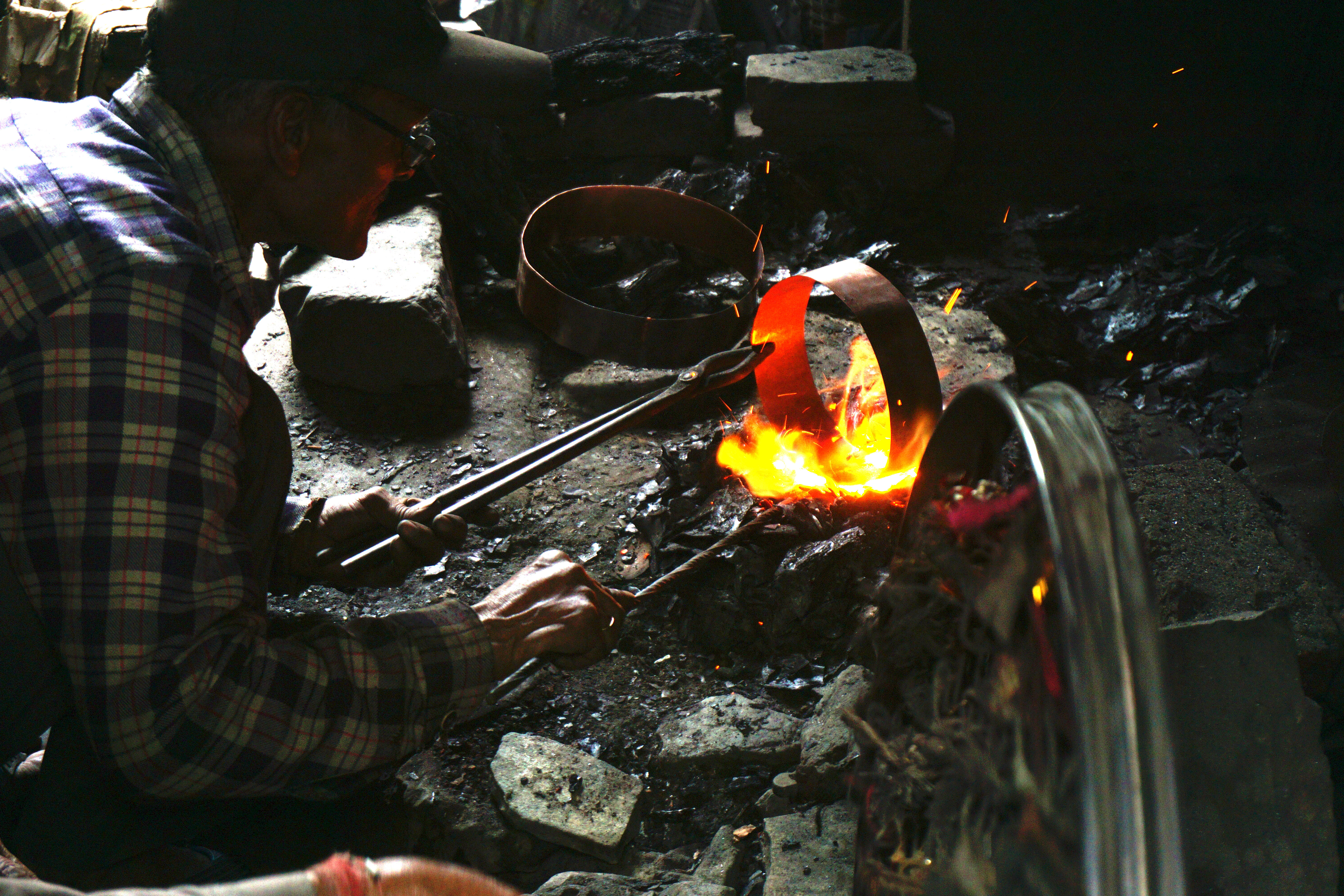
***Soldering:
The parts of the product are made separately and then joined together. These joined parts are soldered. For joining, a powder is mixed with water and applied on the joined areas. The product is again heated on furnace then allowed to dry.
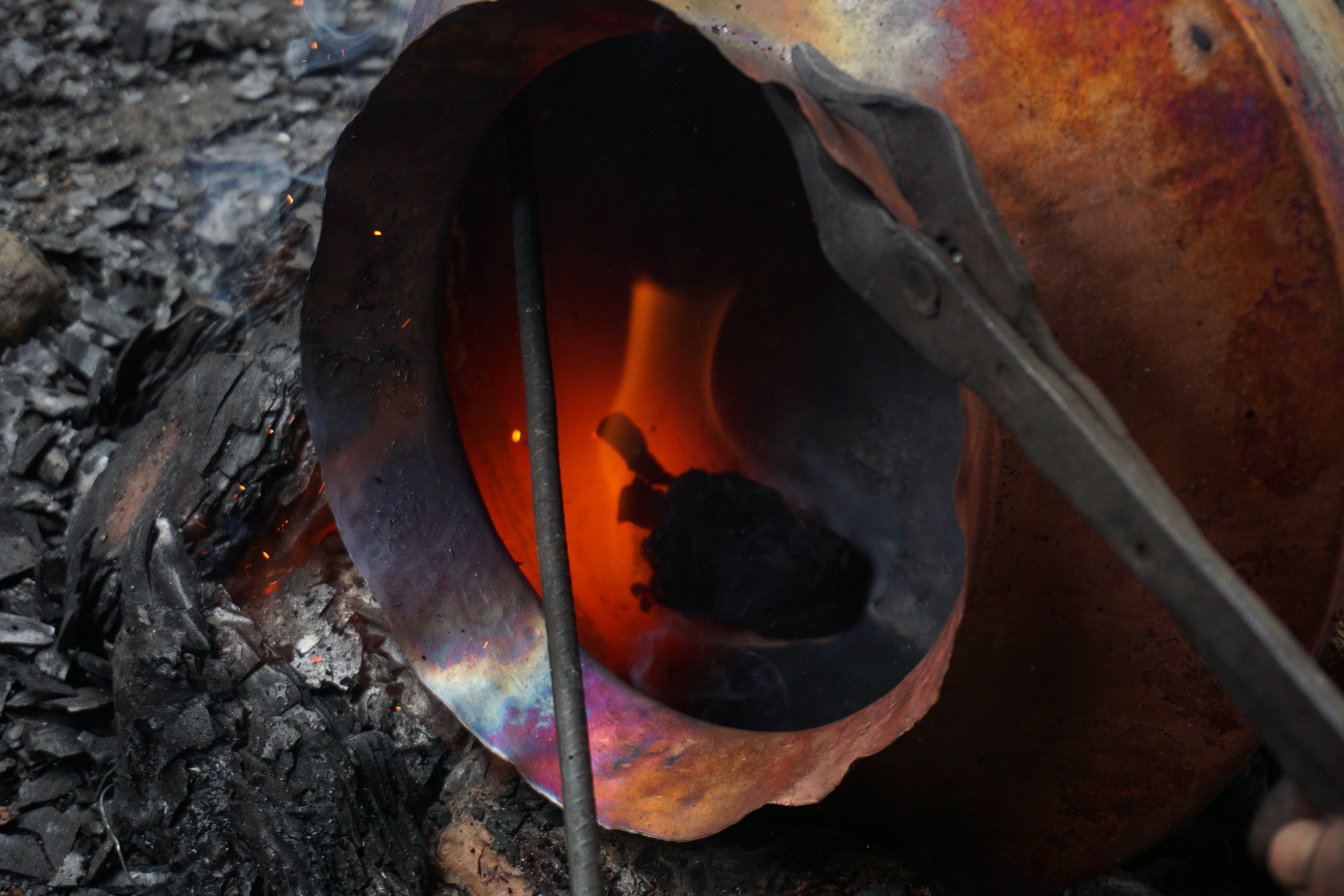
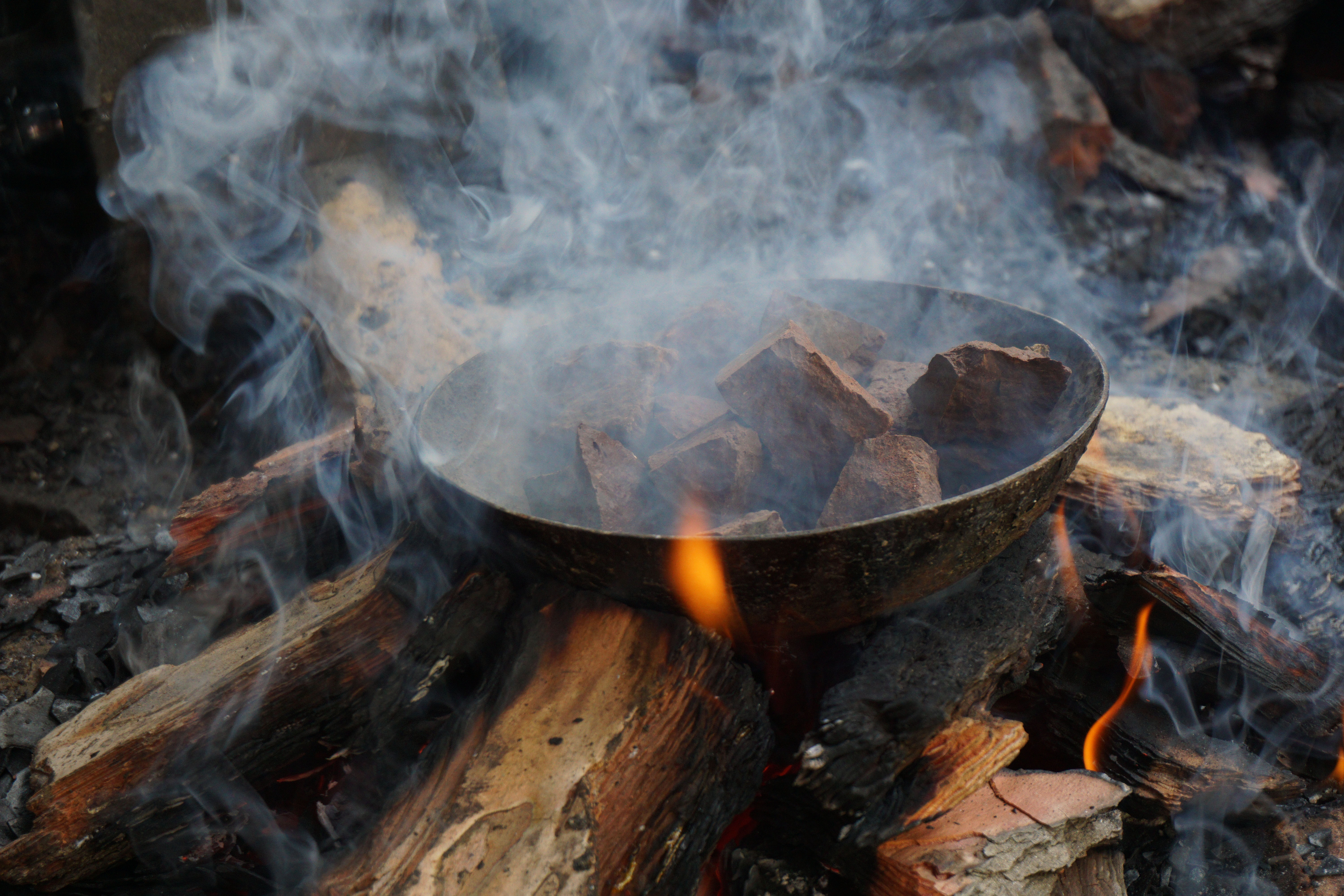 A goliath effort
A goliath effort



This texture is always found in the handmade products. Machine made products are perfect in shape size and color.

The Intricate designing
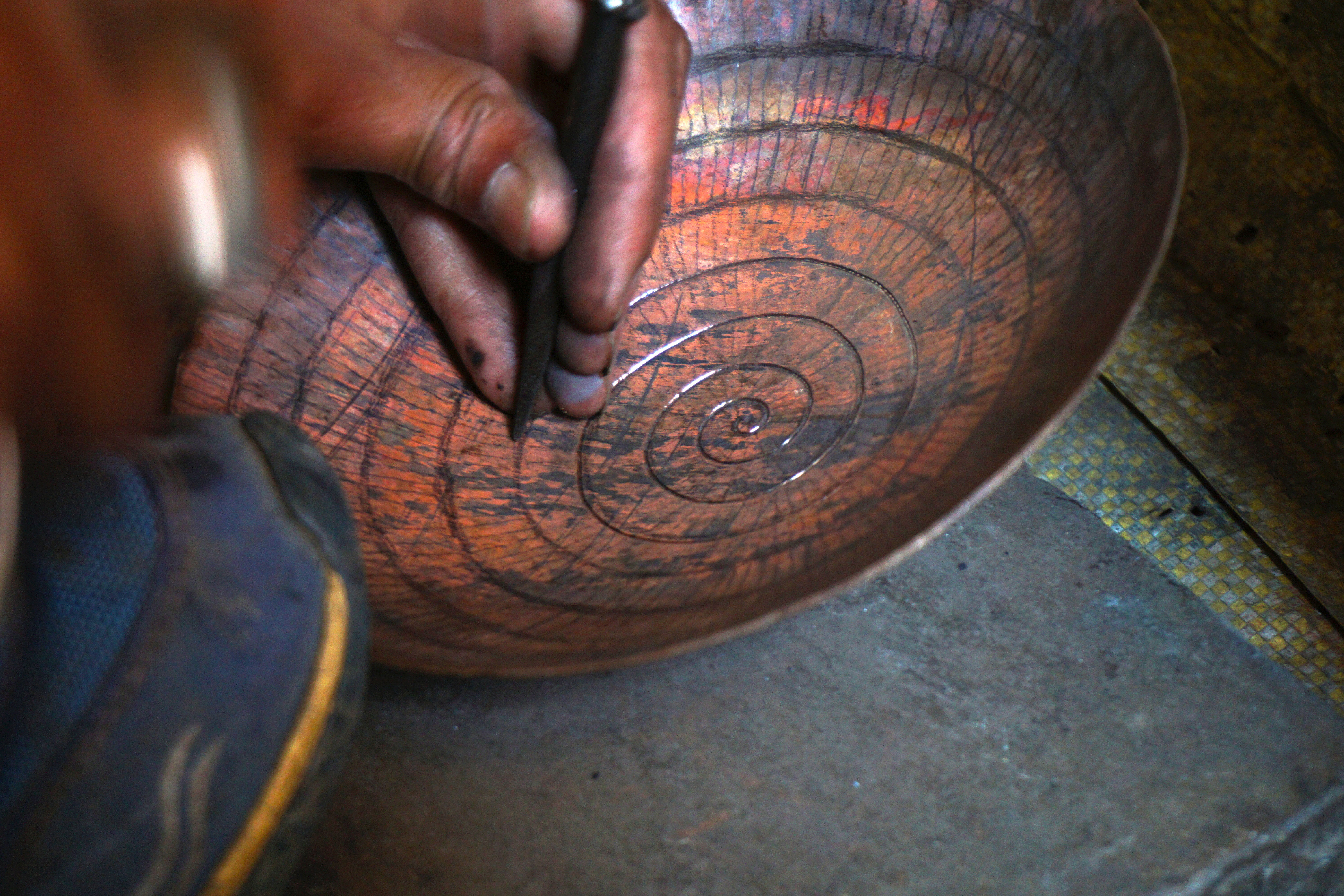
Engraving

Chiseling and beating
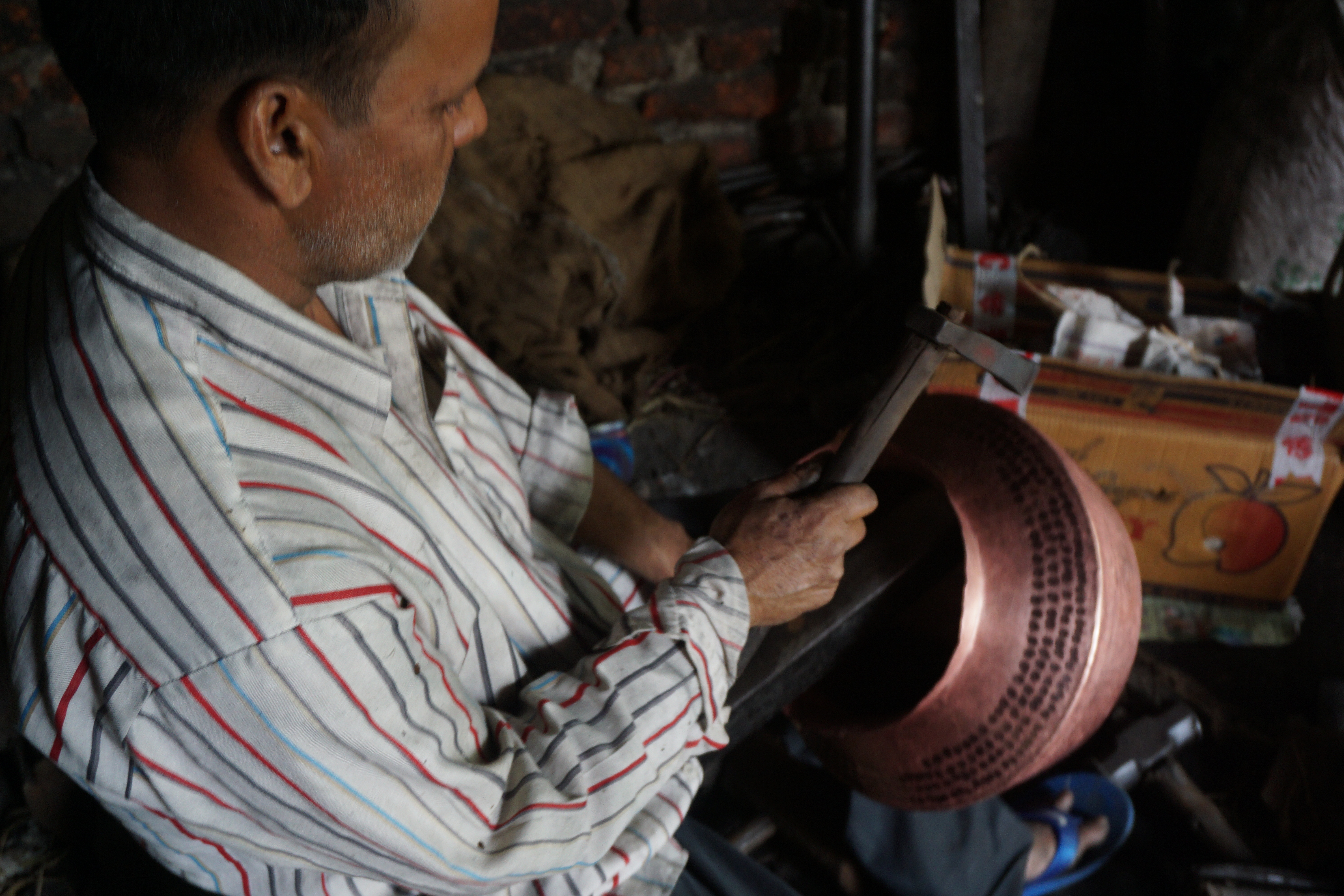
Craftsmanship

The painstakingly handcrafted final product

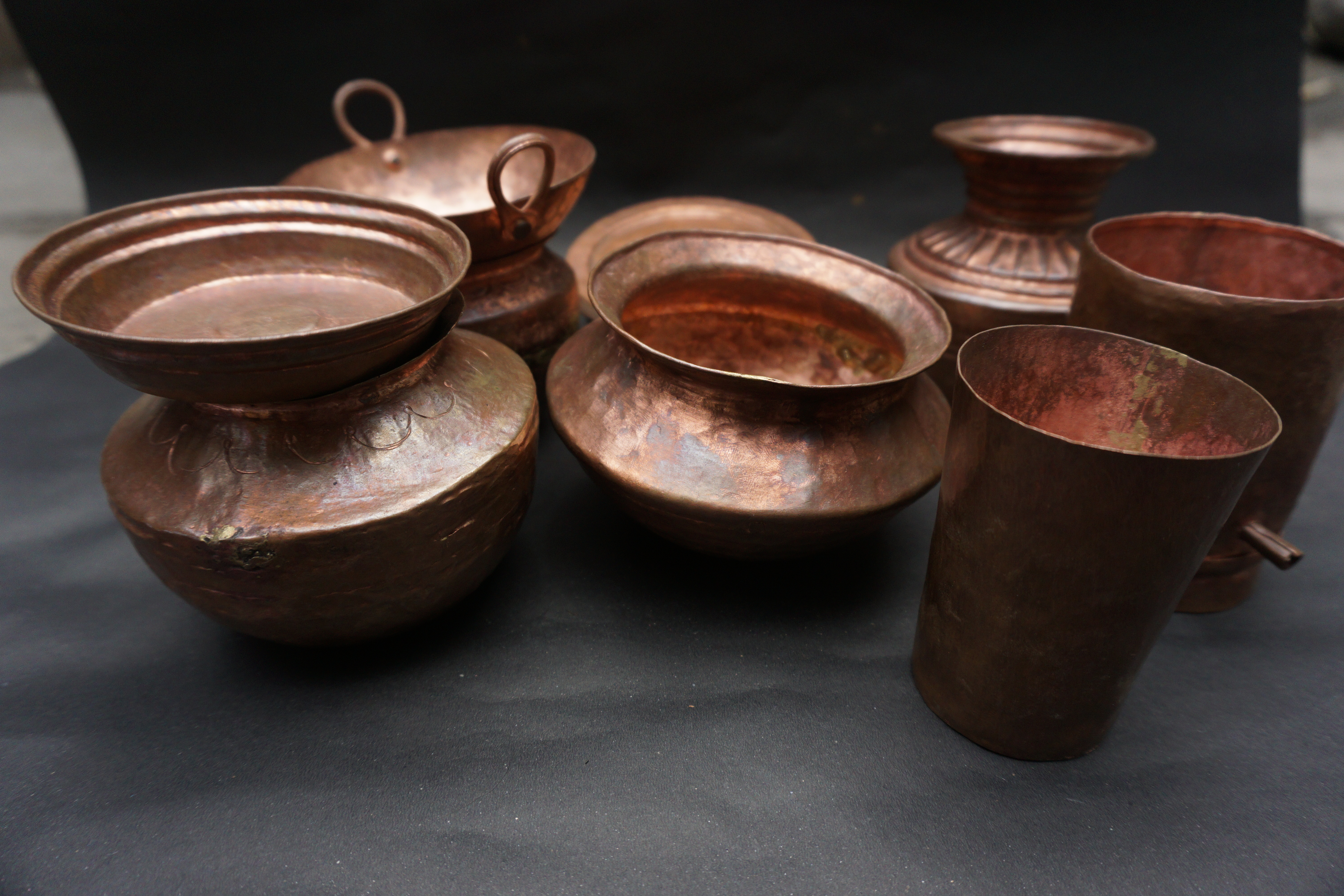
Handbeaten and Handcrafted
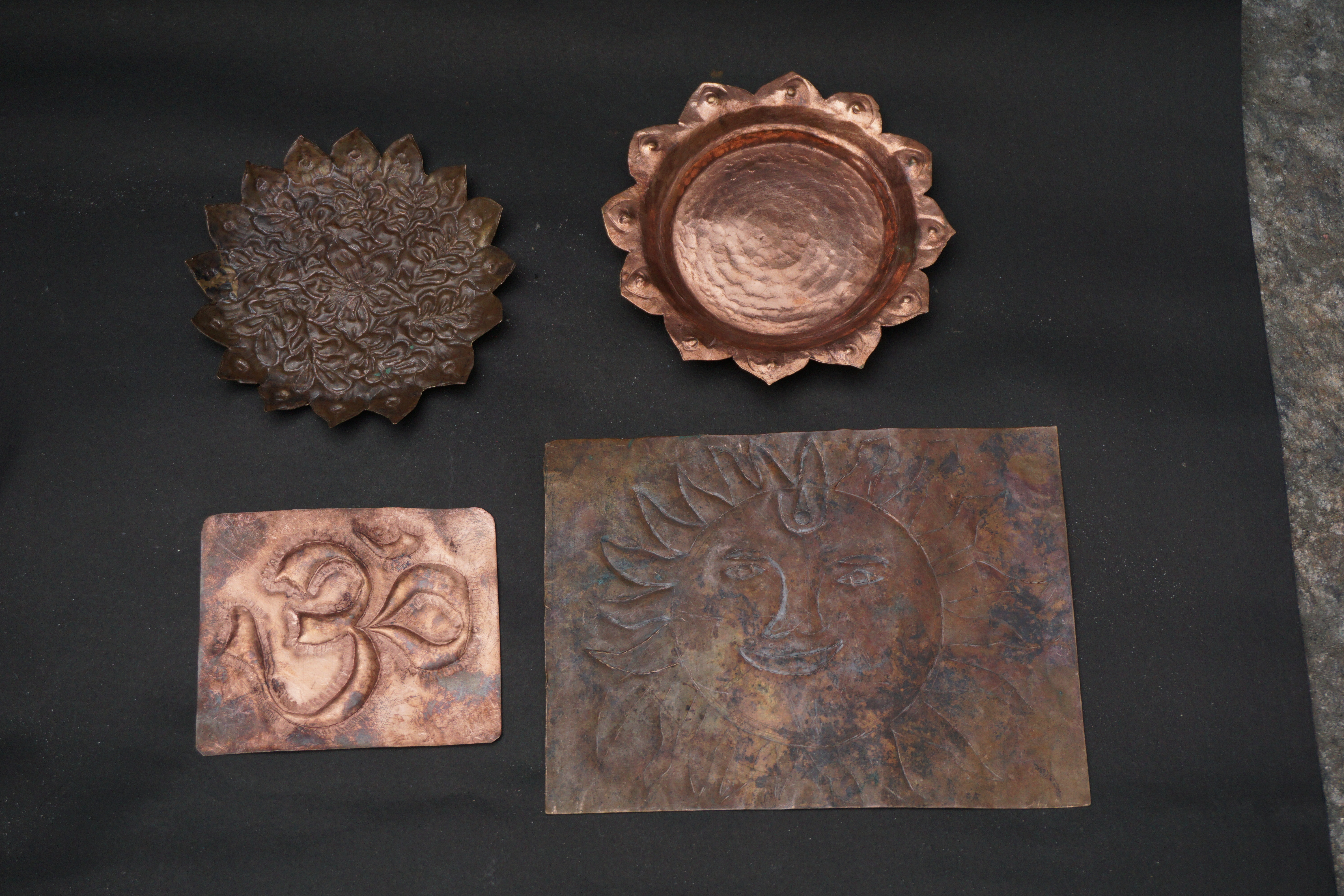
This is the time when we need to develop more respectful ways of generating awareness of our traditional knowledge systems. Today when EPA agrees that Copper has anti-microbial properties and is rapidly becoming the new “Gold Standard” in patient safety and the western world is keen on selectively converting physical surfaces in hospitals and other clinical settings to antimicrobial copper to reduce the spread of infection and save lives. It is high time the government takes steps to revive this art and generate more livelihood for the artisans too. Afterall, we live in times when the western world is obsessing over our homegrown turmeric latte.
References
*** Process
If you wish to get the regular updates from this Rah Geer, subscribe to this blog by entering your e-mail address. You can also follow us on Facebook and Instagram. Also, if you need any help or suggestions with the home-stays or your travel plan, don’t shy away to drop an e-mail. We are more than happy to share our experiences.
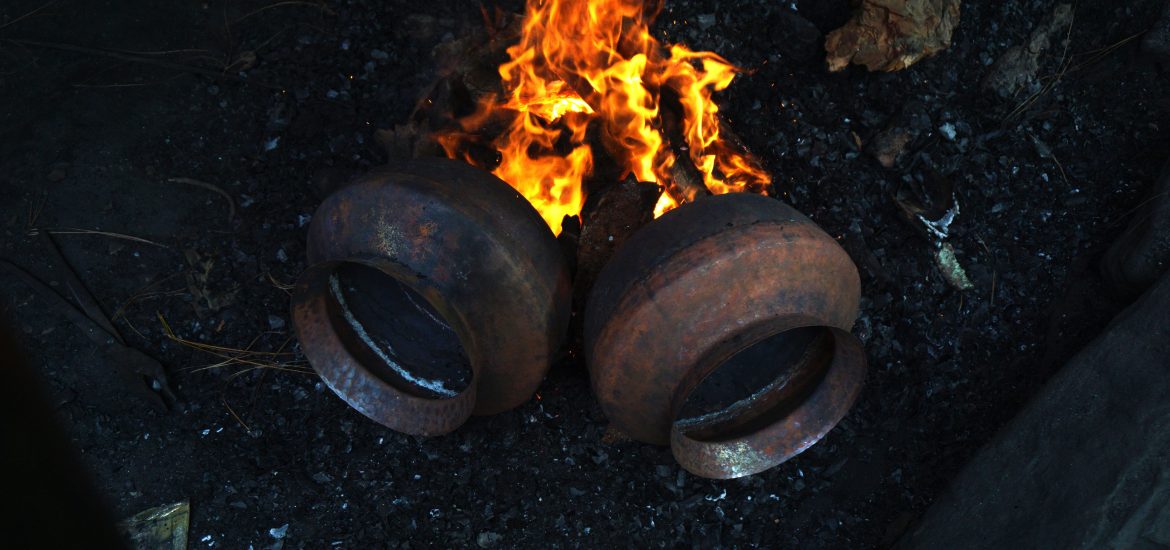
Thanks for this Priti. What an insightful piece. Not only copper, all facets of our ancient knowledge and heritage when re-branded and sold through a colonized process becomes worthwhile. I am sure with awareness efforts by young minds like you, slowly we can decolonize our minds and heritage 🙂 Great job!
And your Ija sounds to be a lovely person. What dedication!
On a side note: some people are using steel vessels that are copper-plated from the outside, thinking it will give the same effect – I am sure they do not posses the know-how that has been passed to us down the generations. But it is risky when I see people using copper vessels for certain food and liquids that can react with copper and actually prove harmful.
Hi Anu, Ija indeed was just awesome and a fighter.
I had been looking for a hand-beaten copper vessel for a very long time, everywhere the vendors try and sell a steel vessel that is copper-plated from outside. Recently I visited Surajkund Mela here in Delhi and I bumped into a Tamta community member from Almora. He was the only one with the imperfect handmade pure copper Lotas. His advice was what “Ija” followed for years. Store the water overnight and drink on empty stomach. If only we could move back to our old traditional methods a lot of these city life ailments will disappear.
Am telling you, traditional knowledge accumulated by mountain inhabitants is an eye opener and so so humbling.
Hi Priti, by any chance do you have the contact of this vendor?
Actually this is really an useful article… But I have to mention that Copper vessels are also been used by people in South India in ancient times for the same reasons that you have mentioned. As you said Many people now a days don’t know this. I hope this would useful for those people… Thanks for this wonderful article Di…
Hello Janani, Yes the vessels have been used for long by our ancestors. Hope to see the tradition continue 🙂
Yes Di… I too remember my grandma using these kind of vessels and I found some people in my region are still using those kind if vessels… I was happy to know that some people didn’t forgot the tradition…